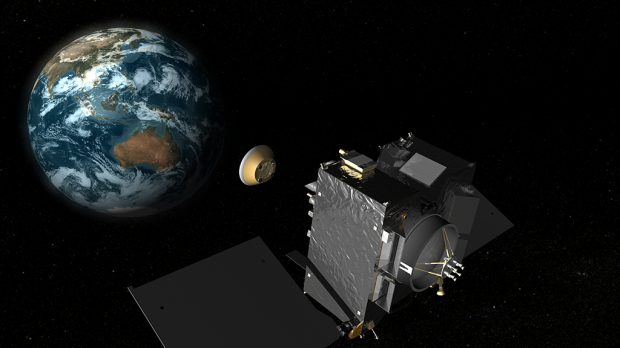The Sample Return Capsule will jump ship as the OSIRIS-REx spacecraft nears Earth.
The main spacecraft will enter solar orbit, while the capsule will come screaming into the top of the atmosphere at 27,000 mph. The tiny capsule will deploy a parachute when it’s about 2 miles from the surface, slowing down enough to land gently in the Utah desert.
Researchers will pick up the capsule and deliver it to the Astromaterials Acquisition and Curation Office at Johnson Space Center, in Houston, Texas. There, the asteroid rock and dust will be extracted and studied.
Most of the sample will be reserved for future scientists and future “questions we haven’t figured out to even ask yet, and the science laboratory instruments that we haven’t even developed yet,” said Gordon Johnston, OSIRIS-REx program executive at NASA.
The OSIRIS-REx science team, including partners in Canada and Japan, will receive the remaining 25 percent.
The Canadian Space Agency, which contributed a mapping laser to the mission, will receive 4 percent of the sample. The Japanese Space Agency will receive 0.5 percent in exchange for a sample of stardust from a comet mission.





